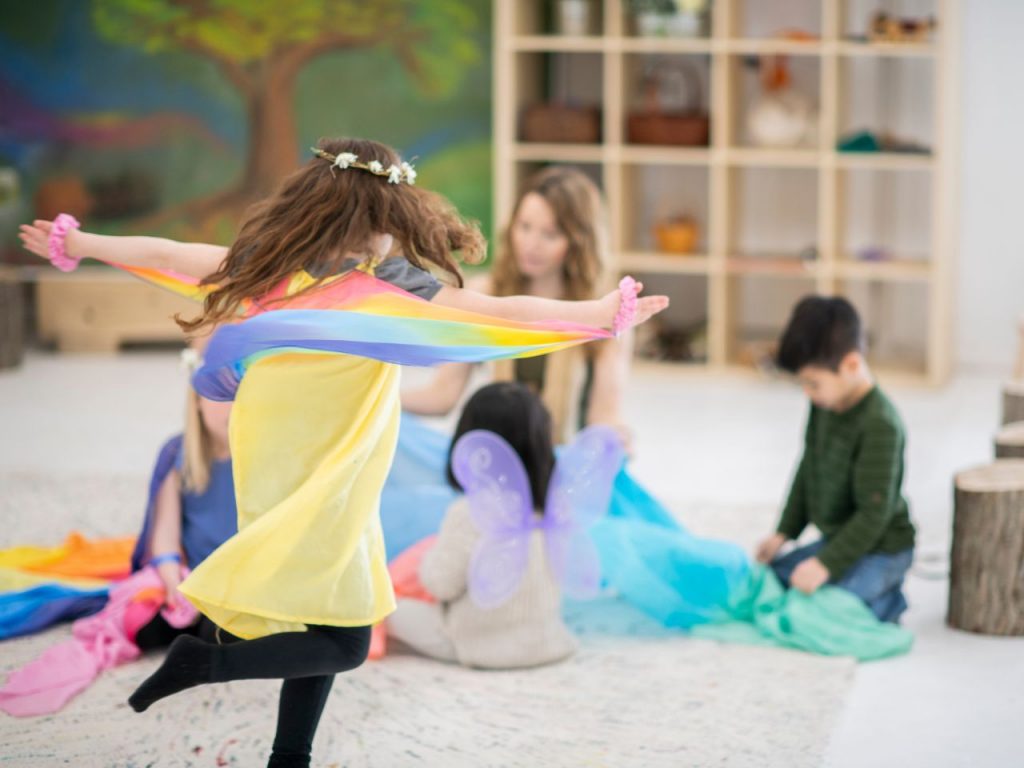I talked recently about lessons you can take from Montessori to enrich your homeschool. Waldorf schools are another great source of ideas. Here are five Waldorf principles that appeal to many homeschoolers.

1. Young children don’t need academics. Waldorf schools don’t start any sort of formal teaching (including teaching reading) until age 7, much like many European schools. Instead, young children primarily learn through play, imitation, art and nature. You also won’t find textbooks or worksheets for young children at Waldorf schools, and elementary-aged children are not graded. (For those who worry about delaying academics, it is worth noting that those European children who aren’t taught reading until age 7 still surpass traditionally taught children in other European and American schools in reading skills in a few years.)
2. Electronics are discouraged. The use of television, video games and computers is limited in Waldorf families because it’s believed that they’re bad for children’s creativity and health. Instead, children spend much more time on activities that engage their whole bodies, minds and spirits. They also spend far more time outside and interacting with nature.
3. Toys and art supplies are well made and natural. Plastic materials may be less common in Montessori schools, but they’re pretty much non-existent in Waldorf schools. Toys are made of materials like wood, silk and other natural materials. Instead of play-dough, children use tinted beeswax for modeling. Instead of putting on pre-made costumes, they fashion their own capes and props with hand-dyed silks. Crayons and paints are vibrant and satisfying.
4. Children learn a lot of handwork. Even young children in Waldorf schools learn skills like knitting (starting with finger knitting), felting and woodworking. Each activity is far more than crafting. Children will often go to a farm and see sheep being sheared, learn how it is spun into yarn and eventually take part in making their own knitting needles. Through something as simple as knitting they will learn to follow patterns, count stitches, coordinate left and right hands, pay close attention and concentrate. These activities combine art and purpose, and can be incredibly satisfying for children. Handwork can also be a fabulous way for active children to busy their hands and nervous energy so they can sit and listen to stories and lessons.
5. Children learn through stories, songs, fantasy and seasons. Waldorf children grow up listening to myths, fairy tales, folk tales, legends and tales of saints and heroes from all different cultures. Music and singing is a big part of the day, as are art and creating. Seasons and cycles of nature are always incorporated. There are typically natural materials throughout the classroom, such as wildflowers, pine cones, sea shells and driftwood. These materials change throughout the seasons. Cycles are also incorporated during the day, such as having a time for music and then a time for listening and then a time for art. Fantasy and imagination are encouraged, especially in the younger years.
For more information on Waldorf, click here.
One of the joys of homeschooling is that we can take what works best for our kids and leave the rest. Take any of these philosophies that speak to you and try them in your homeschool.





